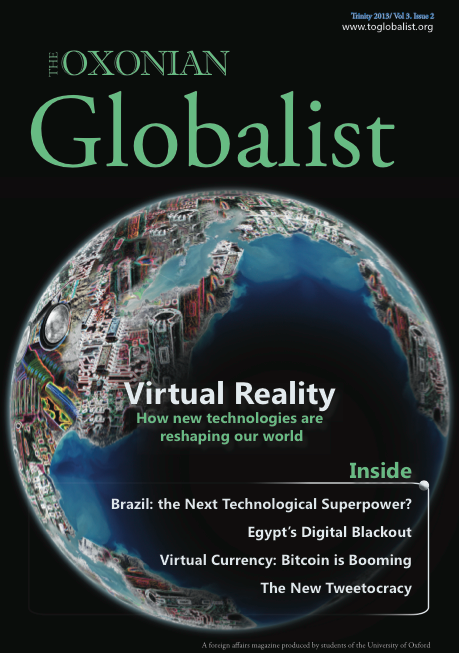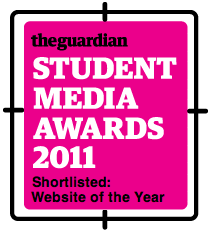From the neck-lengthening rings of the Kayan of Burma to the foot-binding devices of second-millennium China, extreme forms of body modification are nothing new. One of the latest examples of the enduring drive to alter the body comes in the form of so-called “double eyelid surgery”, which creates a crease in Asians’ typically flat upper eyelids, giving the eyes a larger, rounder, more Caucasian appearance. The most popular cosmetic surgical procedure among people of Asian descent, nowhere is it more widely practiced than in the so-called Plastic Surgery Capital, South Korea. Asians living all over the world make pilgrimages to the renowned plastic surgery clinics of Seoul’s posh Apgu-jeong and Gangnam neighborhoods.
For some Korean women, it is images of celebrities— both Asian and white— that first stoke their desire for double eyelids. It is taken for granted that virtually every aspiring Korean actor or singer will undergo some sort of procedure, but cosmetic surgery is becoming a prerequisite for careers in media and even politics; in 2005, then-President Roh Moo-hyun underwent double eyelid surgery in the middle of his term of office. In a culture where “people see Korean celebrities as perfection,” as Min, a 20-year-old Seoulite, put it, trends started by celebrities catch on quickly.
For many women, however, the pressure comes from a source closer to home: in South Korea, it is common practice for relatives and friends to recommend plastic surgery.
“When the Aunties get together, they are brutal,” said one Korean-American woman. “They’ll say things like ‘You need to get a nose job’, ‘You’re ugly and you should do something about it.’” When Sophie Kim, a junior at the University of Pennsylvania, graduated high school, her Korean grandmother asked if she wanted new eyes or a new nose. (Sophie declined.)
Even strangers have few qualms about advising women to go under the knife. Joyce, a 21-year-old Korean woman, recalls that when she went to an optometrist in Seoul to get new contact lenses, the doctor took it upon himself to refer her to a plastic surgeon.
Perhaps it is the story of a 33-year-old teacher from a suburb of Seoul, who asked to remain anonymous, that best illustrates the pressure on Korean women to optimize their appearance. When I met the woman I’ll call Hee-young, she was the picture of poise, fashionably dressed with immaculately applied makeup accentuating the coveted fold above her eyes.
“I didn’t have any confidence when I was younger,” she confessed. “My mom and her friends sat me down and told me surgery was my best option. My mom took me to the hospital for a consultation and that day she and the doctor set a date for my surgery. I went along with it even though I didn’t want to.”
Double eyelids were once exclusive to the genetically fortunate and the upper-class, but these days they are available to anyone with the means to put aside a few won. Eyelid surgery costs the equivalent of about 500-1000 U.S. dollars at a reputable hospital, and many clinics offer substantial discounts for patients who refer friends or undertake multiple surgeries at the same clinic.
Plastic surgery is a popular high school graduation gift for middle- and upper-class girls, but it is affordable enough that even students can often scrape to pay for it themselves. One woman I spoke to funded a double eyelid surgery and a nose job by working part-time as a waitress in college. A North Korean woman profiled in Barbara Demick’s Nothing to Envy, who lost her husband and son to the famine of the 1990s before defecting to Seoul, found the wish and the won to undergo double eyelid surgery after working as a housekeeper for a few years.
The majority of patients are in their late teens or twenties, but the desire for double eyelids cuts across generations. Kim Tae Yeon, 19, had the operation on the same day as her mother; her grandmother was astounded by the results and claimed she wished the technology had existed in her day. On the other end of the spectrum, Dr. Hee Moon Lee, a surgeon at Eye Magic Aesthetic Clinic, told me he would have no problem operating on an elementary school student. He’s a liberal guy, though; he performed eyelid surgery on his own daughter when she was fifteen.
Doctors can tailor the surgery to suit their clients’ age, budget, taste and commitment. In the most painful, expensive and lasting technique, which takes up to two hours, the eyelid is anaesthetized, sliced with a scalpel, forced into a crease and sewn into place. Less invasive variations minimize or skip the incision but may need to be repeated every few years.
“I looked like a monster for the first two weeks,” recalled Min, even though she opted for partial incision surgery and will have to get it redone this year.
The surgeons I met assured me that double eyelid surgery is virtually risk-free, but Hee-young’s experience suggests otherwise. After enduring an hour-long operation, she came away with not one but two creases above her eyes— a so-called “triple eyelid.”
“I looked so ugly, and the lines above my eyes looked worse when I smiled– I tried not to smile at all,” she recalled. It took three surgeries, two years and incalculable emotional suffering before the surgeon finally got it right.
For many women, getting the operation is something of a social event.
“Eyelid surgery just isn’t a big deal,” said Min, who got it with a girlfriend after high school graduation. “There’s no reason not to talk about it.” Girls compare experiences and trade names of surgeons they like.
Whereas Americans recovering from a cosmetic operation might hide out at home until their scars have faded, it is not uncommon to see Koreans walking down the street with surgical masks barely concealing their bruises.
“It’s weirder if you hide it,” said Hee-young.
Aggressive advertising also helps normalize plastic surgery. Billboards at metro stations and on building facades feature “before and after” images of patients morphing from monolidded and glum to big-eyed and radiant. Advertisements for aesthetic procedures are ubiquitous in fashion magazines, but they make their way into mainstream newspapers, too.
As for the gender divide, Dr. Lee laughed when I asked whether more of his patients are women than men.
“Of course,” he said. “A woman’s appearance is more important in getting jobs, marriage, relationships.”
The legacy of a traditionally patriarchal society persists in the disparity between opportunities for men and women in this economically thriving but socially conservative culture. Thanks to massive shipbuilding and auto industries, South Korea managed to pull itself out of the devastation wrought by years of conflict with the communist North and domination by imperial Japan, but the progress of women has not kept pace with the rapid political and economic development. Of the 135 countries profiled in the 2011 Global Gender Gap Report, South Korea– the fifteenth largest economy in the world– came in at 107, between Zambia and Tunisia.
Women are ever more present in higher education, but there are powerful cultural barriers blocking their progress in the workplace. “If a woman gets pregnant, nobody says, ‘Quit your job,’ but the atmosphere is, ‘Quit your job,’” said Lee Tae Yang, who works at a trading company in Seoul. It is not surprising that in a country where women’s most important duty is to find a husband, they make up the vast majority of plastic surgery patients.
The emphasis on appearance is evident on every street of Seoul, where women are, almost without exception, immaculately put together. “If you went to meet your girlfriends for coffee and you didn’t wear heels, they would be like, ‘What are you doing?’” said Maris Moon, who divides her time between Seoul and New York.
From my conversations with Korean men and women, it quickly became clear that this ethnically homogeneous nation dictates rigidly specific standards of beauty. Women, I am told over and over, should be as thin as possible, with a high nose and forehead, double eyelids, pale skin, long hair and a small face, with the chin and jawbone forming the shape of a “V.”
The cosmetic procedures on offer reflect these stringent ideals. Some standards, such as light skin, are relatively easy to achieve; women carry parasols and apply whitening creams, and their diligent use of sunscreen would garner praise from any western dermatologist. Others, however, require surgical intervention. After eyelid surgery, the most popular procedures include rhinoplasty, liposuction and, most recently, “double-jaw surgery.” In this risky procedure, developed to correct severe facial deformities, the surgeon breaks the patient’s upper and lower jawbones and rearranges them to conform to the all-important “V-line.”
For men, the standards are somewhat more fluid. They should be tall and in shape, but the question of single or double eyelids comes down to personal preference. A small portion of Korean men choose to undergo double eyelid surgery, but others come to doctors seeking to get rid of their natural crease.
“A monolid gives a strong impression, which is okay for men but not for women,” explained Dr. Choi.
Jessi, who prefers men with single lids, says that her whole look was “meaner” before she got the fold. Min agrees; she says a person with double-eyelids looks “gentle, kind and soft.”
One Korean reporter insisted her decision to undergo surgery wasn’t racially motivated.
“I’ve travelled all around the world,” she said, “And there are some things that are considered beautiful everywhere. Big eyes are one of them.”
“I didn’t get the surgery because I wanted to look Western,” agreed Min.
Members of the older generation, though, remember a time when big eyes weren’t a benchmark of beauty.
“The standard of beauty has changed,” said Tae Yeon’s aunt, Suniem. “Before the Korean War, people without a crease were called beautiful, but as Korea has westernized, big eyes and a high nose have become desirable.”
Koreans may prefer Caucasian beauty, but their attitude towards the West is highly conflicted. The US military’s presence in South Korea has been a source of indignation for sixty years, and dating a Westerner, even for Koreans living abroad, is scandalous. Nonetheless, it is undeniable that Western brands have a caché no Korean designers can approach, and Koreans know Hollywood actresses as well as their own beloved pop stars. Like many Korean girls, Tae Yeon remembers playing with Barbies as a child.
Some Koreans, though, believe they are detecting a backlash against the preference for Caucasian beauty. Sylvia Kang, a junior at Boston College who comes to Seoul every summer to visit family, says there are more Koreans relative to Westerners on billboards and in magazines today than just a few years ago. Several of my interviewees mentioned Kim Yuna, the Korean Olympic figure skater whose refusal to alter her monolids has made her an icon of traditional Eastern beauty.
Surgeons, however, remain optimistic about the future of their industry.
“Westernized Asian aesthetic surgery will grow every year,” predicted Dr. Yong Kyu Kim of YK Plastic Surgery. “The next market will be the Chinese.”
“Double eyelid surgery will only get more popular,” agreed Dr. Won. He compared double eyelid surgery to a gateway for more serious procedures. “For a lot of people, it is just the first operation. They get eyelid surgery and then come back for more.”
As South Korea becomes ever more prosperous and assured of its place in the world, perhaps Koreans will begin to embrace their natural features. Even Tae Yeon, who says she feels prettier since getting the crease, says, “The best thing is if you feel good without surgery.” But until then, girls like her will find confidence under the knife.




